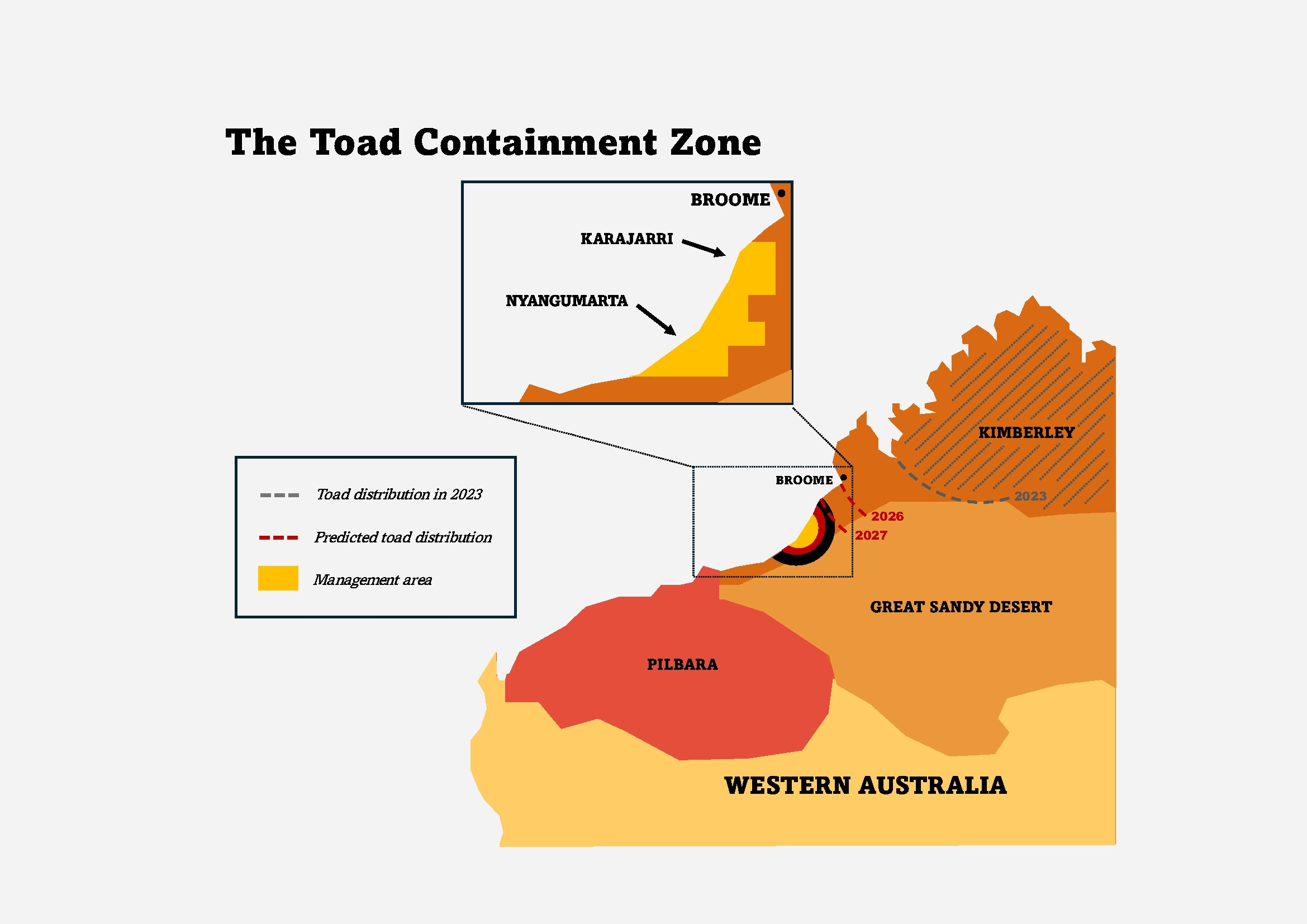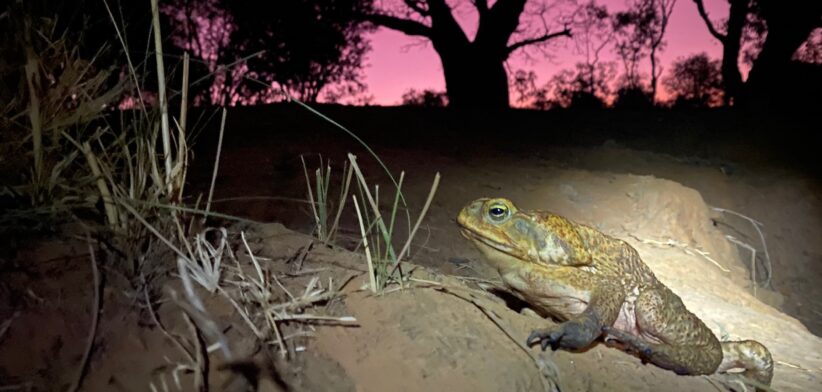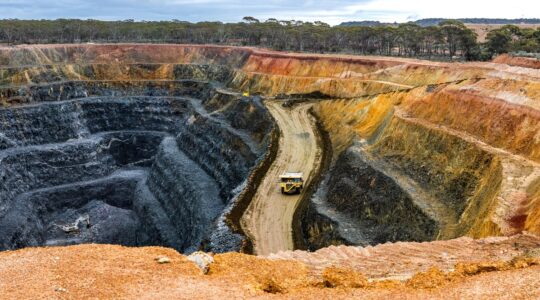The West Australian Government is investing in a multi-million barrier to stop the march of cane toads in the west.
The barrier would establish a Toad Containment Zone (TCZ) to prevent the invasive species from infiltrating the Pilbara region.
Developed through a collaboration between traditional owners, rangers, pastoralists, and scientists from Curtin and Deakin universities, the $12 million initiative hopes to protect 27 million hectares of sensitive habitat, significant Aboriginal cultural heritage and native wildlife.
Professor Ben Phillips from Curtin’s School of Molecular and Life Sciences said the containment zone, on the edge of the Great Sandy Desert, aimed to halt the spread of cane toads south from the Kimberley and prevent the ecological damage they have caused in other regions.
Professor Phillips said the barrier, developed from more than a decade of research, would remove access to water at 150 man-made water points in a narrow coastal strip between the Kimberley and the Pilbara.
“Toads invade by steadily moving across the landscape in the wet season, but they need water points to survive the long, hot dry season. Without access to water, toads in the containment zone will perish, effectively stopping their advance,” he said.
“With cane toads currently less than 150km from Broome and projected to reach the containment zone by the 2027/2028 wet season, the urgency to implement this plan is critical.”
He said the TCZ, once rolled out by Nyangumarta and Karajarri ranger groups and Rangelands NRM, would serve as vital biodiversity protection infrastructure.
NRM Rangelands Manager Chris Curnow said the initiative was a once-in-a-lifetime opportunity to prevent an ecological catastrophe across the entire Pilbara.
“Ever since the idea of the toad break arose nearly 10 years ago, the Nyangumarta and Karajarri traditional custodians have been on board guiding and informing the way ahead,” Mr Curnow said.
“Their knowledge of the area has helped pinpoint the various water sources and have guided scientists as to where the zone will have its best chance of success.”









